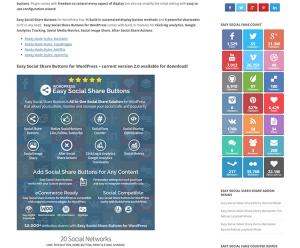Reassess your strategy, identify implementation challenges and turn your martech investments into marketing triumphs.
The allure of martech can be deceptive. It’s easy to get caught up in the promise of cutting-edge technology and lose sight of the practicalities involved in bringing these tools to life.
More than the financial commitment, you need to evaluate your marketing goals, along with the expertise to integrate these tools seamlessly with your existing systems and the ability to make sense of the data they provide.
As we navigate the complexities of martech, let’s explore what it really takes to turn these tools from a promising investment into a pivotal part of your marketing success story.
Are your martech investments truly paying off?
Imagine this: You’re excitedly investing in these advanced tools, convinced they’re the key to transforming your marketing strategy. You envision automated processes, insightful data analytics and a significant boost in engagement and sales.
But what happens when the reality doesn’t quite match up to these high expectations? It’s a story that’s all too familiar — a tale of investments that promise the moon yet deliver something less stellar.
So, what’s really going on here? Are these sophisticated martech tools inherently flawed, or is there something missing in how we approach them?
It’s not just about the investment; it’s about integrating and executing these tools in your marketing strategy. The challenge is making them work effectively in your organization’s unique landscape.
The illusion of integration in martech
The much-touted “seamless integration” is critical to the martech puzzle. It’s a term that martech vendors love to throw around, often painting a picture of a perfectly harmonized suite of tools that effortlessly talk to each other, sharing data and insights like old friends. But here’s the reality check: the actual landscape differs from the advertised glossy exterior.
Think about it. The martech space is bustling with activity, with big players constantly acquiring smaller startups, each bringing their unique tools to the table. This melding of technologies under one umbrella creates a facade of integration. But the story changes when it comes to the nuts and bolts of making these tools work together in the real world. It’s like trying to fit pieces from different jigsaw puzzles into one coherent picture — challenging, often frustrating and not always successful.
True integration is not just about having a common dashboard or a shared login. It’s about:
- Ensuring that these tools can effectively communicate and transfer data in a way that aligns with your specific marketing goals and use cases.
- Creating a symphony from what often starts as a cacophony of disjointed instruments.
This is where the heavy lifting comes in. And the challenges are manifold.
- You’re looking at issues of compatibility, where tools from different vendors might not speak the same technical language.
- Then there’s the question of data integrity and security — how do you ensure a seamless flow of information without compromising on these critical aspects?
- And let’s not forget the practicalities of user experience. How intuitive is this integrated system for the people who will use it daily?
This illusion of integration can lead marketers down a path where they overestimate the capabilities of their martech stack, only to find themselves tangled in a web of technical complexities.
The reality is that achieving a truly integrated martech ecosystem requires a strategic approach, a keen understanding of the underlying technologies and often, a fair bit of customization.
IT leadership in martech: A misaligned approach
Another intriguing facet of the martech conundrum is the role of IT leadership. In many organizations, the reins of martech are held firmly in the hands of the IT department. Now, while this might sound like a match made in tech heaven, it often turns out to be less than ideal. Because IT and marketing view the world through fundamentally different lenses.
IT departments, bless their hearts, are the wizards of implementation. They’re all about the nuts and bolts, the zeros and ones, the seamless functioning of systems. And that’s great, right? But here’s the catch — when it comes to martech, the story doesn’t end at implementation. It’s not just about getting the system up and running; it’s about what you do with it. This is where the paths diverge.
The essence of marketing technology is to enhance marketing strategies, engage customers, analyze trends and drive sales. To make the most of it, you must understand the nuances of customer behavior, craft compelling campaigns and then tweak these based on real-world feedback.
When IT leads the martech charge, there’s a risk of focusing too heavily on the technical side while losing sight of these marketing-centric goals.
The result? A beautifully built martech infrastructure that’s a marvel of technology but somehow misses the mark. It’s like having a state-of-the-art sports car that no one really knows how to drive to its full potential.
This misalignment can create a gap between what the martech tools are capable of and what the marketing team actually needs them to do. So, it’s essential to strike a balance — blending IT’s technical prowess with marketing’s strategic vision, ensuring that martech tools are not just well-implemented but also well-utilized.
Harnessing martech’s full potential: Building expert teams and strategic frameworks
Having a team of subject matter experts (SMEs) steering the martech ship is another critical yet often overlooked aspect of implementation. Picture this: a group of savvy professionals, each a maestro in their respective fields — marketing, technology, data analysis, user experience and project management. This dream team isn’t just a nice-to-have; it’s a must-have for any organization serious about making the most of their martech investment.
Contrary to the glossy sales pitches, martech tools aren’t just plug-and-play. They’re complex beasts, requiring a deep understanding of the technology and how it aligns with marketing strategies, customer behaviors and business goals.
This is where the SMEs come in, bridging the gap between potential and performance. They’re the ones who can tweak, tailor and finesse these tools to drive real, tangible results. But building this team is just one piece of the puzzle.
Once you have your martech Avengers assembled, how do you ensure they operate at their peak? Enter the RACI model — a framework that clarifies who is Responsible, Accountable, Consulted and Informed for each task or decision.
With a well-defined RACI chart, every team member knows exactly their role, where they need to collaborate and who calls the shots. This clarity streamlines decision-making and minimizes duplication of efforts and gaps in communication. It’s like giving your team a roadmap in a dense forest, guiding them toward their destination without unnecessary detours.
It’s also crucial to talk about the fuel that powers this engine — the operational budget. It’s not enough to just form a team and set up a framework. You need to sustain it. This means having a budget that perfectly balances internal resources and external agency support.
Think of it as having a well-stocked kitchen. Your internal team is your staple ingredient, essential for your day-to-day operations. But sometimes, you need that exotic spice or special sauce — that’s where external agencies come in, bringing in fresh perspectives and specialized skills you might not have in-house.
The beauty of this approach is multifold:
- It ensures that your martech tools are not just gathering digital dust but being actively used to their full potential.
- It brings a level of agility and flexibility to your operations. You can ramp up or scale down based on your needs, tapping into external expertise for specific campaigns or initiatives.
- It fosters a culture of continuous learning and innovation. Your internal team collaborates with external experts, picking up new skills and ideas along the way.
What we’re looking at is a holistic approach to martech management. You want to have the right people in the driver’s seat, armed with a clear roadmap and the necessary resources to navigate the complex terrain of digital marketing. This is how you transform your martech tools from shiny objects to powerful engines of growth and innovation.
The post What to do when your martech tools aren’t delivering results appeared first on MarTech.
MarTech(8)







